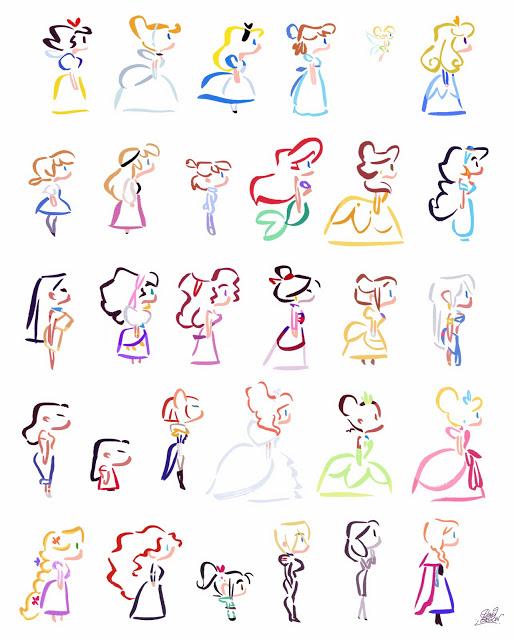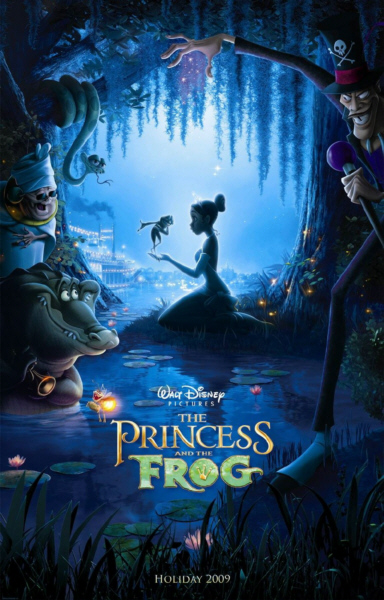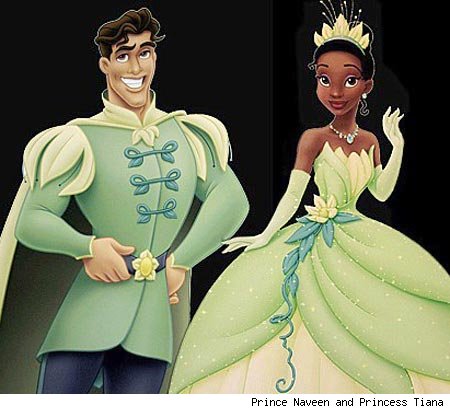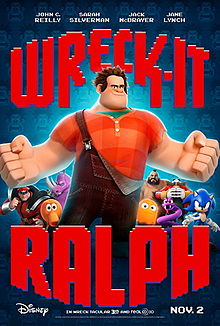This is a guest post by Brigit McCone.
While #Gamergate has not yet officially rebranded itself as #EpicStreisandEffect, the one heartwarming thing about a mob trying to silence their critics is how bad they are at it. The inflammatory atmosphere created by #Gamergate makes it difficult for balanced discussion of Anita Sarkeesian’s critiques, but one interesting aspect that recently occurred to me is how neatly six of her tropes fit the portrayal of men in recent Disney Princess films (from 1989’s The Little Mermaid onwards).
Since the Disney Princess film is almost as male-dominated as video games (Frozen‘s Jennifer Lee was the first female director of a Disney feature), this appears less a genuine reversal than a clumsy “sexism-in-drag” aimed at empowering young girls. But it offers a golden opportunity for female viewers to interrogate our response: do these tropes empower us when reversed? Do we recognize them as sexist? Would they still be dehumanizing if applied equally to male and female characters?
THE DUDEZEL IN DISTRESS
“TROPES VS. WOMEN” SOURCE: The Damsel in Distress
The “dudezel in distress” is a plot device in which a male character is placed in a perilous situation, from which he cannot escape on his own, and must be rescued by a female character. Traditionally, the “dudezel in distress” is a family member or a love interest.
DISNEY DUDEZELS: Among family members, Maurice in Beauty and The Beast (which had a female screenwriter, incidentally) is a classic example of “Dudezel Dad.” His kidnapping forces Belle to risk her life to rescue him, while his pitiful attempt to rescue her is actively counterproductive – his near-death drives Belle to risk her safety again. Both the Beast and Gaston hold Belle hostage by the threat of locking up Maurice, who is consistently punished for attempts to assert agency or independence. Other female characters whose plot arcs are motivated by rescuing their fathers include Ariel of The Little Mermaid (father petrified as worm-creature) and Mulan (father’s peril motivates daughter to take up arms).
The “love interest” as “dudezel in distress” is yet more troubling: girls are taught through this trope that love is the inevitable result of gratitude, rather than the dudezel’s own choice. Take The Little Mermaid: not only does Ariel rescue Eric from drowning, Eric’s inability to love her is depicted as the direct result of his failure to recognize the girl who rescued him. Similarly, Pocahontas must save her love interest, John Smith; Mulan must repeatedly rescue her love interest Shang; Tiana must rescue gold-digging Naveen from his entrapment as a frog. Disney offers no examples of women rescuing men who choose not to become romantically involved with them; being rescued is shown to obligate the dudezel in every case. As such, this trope cannot be seen as empowerment, but as a harmful lesson for girls that also alienates male audiences.
MEN IN REFRIGERATORS
“TROPES VS. WOMEN” SOURCE: Women in Refrigerators
“Men in Refrigerators” refers to the trope of men suffering a loss of powers, brutal violation or an untimely, gruesome death, most often as a plot point for the female hero to seek revenge or further her heroic journey.
DISNEY FRIDGE-DUDES: The best example of violation in the Disney universe is that of Eric by the witch Ursula in The Little Mermaid. His mind and control over his emotions are utterly violated to motivate Ariel’s final confrontation with Ursula and completion of her heroic journey. The traumatic effects on Eric are never shown; Ariel’s response is centered. This rewrites the original story, where the prince chose the mermaid’s rival freely and she learned to accept his choice: surely a better model. Male characters suffering loss of powers to motivate female heroines include Ariel’s father, Triton, and Jasmine’s father, the Sultan, reduced to worm-creature and jester respectively. Male characters killed to facilitate the heroine’s journey include Tiana’s father, whose death motivates her desire for a restaurant, and thus the whole plot of The Princess and the Frog, and the Beast in Beauty and the Beast, whose traumatic murder allows Belle to realize her feelings for him. Once again, its use of ‘men in refrigerators’ reinforces a utilitarian attitude to male characters in Disney Princess films.
MANIC PIXIE DREAM DUDE
“TROPES VS. WOMEN” SOURCE: Manic Pixie Dream Girl
The Manic Pixie Dream Dude is a bubbly, shallow male character written in order to help the female character learn to loosen up and enjoy life. Typically, the Manic Pixie Dream Dude has no job or defined interests of his own.
DISNEY PIXIE DREAM-DUDES: Disney’s most obvious Manic Pixie Dream Dude is Prince Naveen of The Princess and the Frog. The heroine, Tiana, has clear career ambitions, loyalty and responsibilities which cause her life to lack joy. Manic Pixie Naveen, despite being a prince, has no independent career or goals and adjusts seamlessly to working in Tiana’s restaurant: he exists to facilitate her goals, while exuding fun, madcap spontaneity and irresponsible wildness to help the heroine embrace joy. Similarly, Rapunzel in Tangled has a clear sense of responsibility, moral values, a conflicted relationship with mother-figure Gothel and the goal of reuniting with her parents. Flynn is the perfect foil: he exists to be a fun and wild antidote to Gothel’s influence, but assimilates to Rapunzel’s lifestyle in the end by abandoning his personal goals (or rather, by being revealed as an orphan who lacks all ties and purpose, and who is explicitly told that his dream of wealth and empowerment “sucks”). He also exhibits a tendency to petty crime that TV Tropes identifies as typical of Manic Pixie Dream Girls. In both cases, the empowerment of the female character is portrayed as a wish fulfillment only realizable through disempowerment of the males.
STRAW CHAUVINIST
“TROPES VS. WOMEN” SOURCE: The Straw Feminist
The Straw Chauvinist is an exaggerated caricature of a chauvinist, filled with misrepresentations, oversimplifications and stereotypes.
DISNEY STRAW CHAUVINIST: Gaston, from Beauty and the Beast, is the clearest example of a Straw Chauvinist in Disney film. Acting as the sole representative of masculine sexual assertiveness and self-confidence within the film (unless you count the comedy-relief candlestick), Gaston implicitly associates these features with self-satisfied ignorance, kidnap, blackmail and the persecution of the mentally ill: “No-one plots like Gaston, takes cheap shots like Gaston, likes to persecute harmless crackpots like Gaston.” Everything from the masculine desire for physical enhancement through body-building and protein-ingestion (“I eat five dozen eggs, so I’m roughly the size of a barge”) to the stereotypical male habit of spitting (“I’m especially good at expectorating”) is, through Gaston, made to appear ridiculous, over-the-top and unnecessary. The purpose is to separate the male lead, Beast, from any association with chauvinism that might be provoked by the character’s being huge, hairy and creepily controlling towards women. This clearly parallels the Veronica Mars example that Sarkeesian cites as “straw feminism,” where the independent, intelligent Veronica is separated from any association with “those kind of feminists” through the use of exaggerated, straw feminist caricatures. Is this, then, one of “the most disgusting tropes ever forged in Mt. Doom” or a reasonable way to use the very ridiculousness of feminist caricatures to separate them from actual feminism? Certainly, the worrying aspect of Disney’s “straw chauvinist” trope is not that it “discredits” chauvinism, but that it normalizes the abusive behavior of Beast through his contrast with Gaston; the “straw chauvinist” shifts the emphasis to ridicule of a stereotyped image rather than identification of harmful behaviors.
VAMPERMAN
“TROPES VS. WOMEN” SOURCE: The Evil Demon Seductress TV Trope: The Vamp
The Vamperman, or “evil demon seducer,” is a sexualized man who lures women into his evil web, using his sexuality as a weapon.
DISNEY VAMPERMEN: Strangely for family fare, modern Disney films are full of this trope: Jafar, Scar, Hades, Claude Frollo. Portrayed as manipulative, conniving and controlling men, in each case they exert power over the female leads in a sexualized manner: Princess Jasmine must kiss Jafar to save Aladdin; Scar’s rape threat to Nala was cut from The Lion King film but retained in the stage show; Claude Frollo has an entire “Hellfire” aria about his sexual urges for Esmeralda; Hades literally owns the soul of Megara and uses this to stroke and cuddle her to her visible disgust. Not only do the characters use sex as weapon, they are inappropriately sexualized themselves: tall, aquiline, sardonic and acted by velvet-voiced charisma bombs like Jeremy Irons or James Woods. Dracula’s (the novel’s) description of its female vamps’ “deliberate voluptuousness that was both thrilling and repulsive” seems apt for Disney’s charismatic Vampermen. A streak of theatrical camp is often used to supposedly disarm the predator’s sexual threat, creating the Camper Vamperman variant. Vampermen allow female viewers to objectify the character’s “thrillingly repulsive voluptuousness,” while confirming what Sarkeesian might term “sexist, preconceived notions” that men are manipulative, deceitful, and sexually threatening.
MR. FANSERVICE
“TROPES VS. WOMEN” SOURCE: Women As Background Decoration TV Trope: Ms. Fanservice
Mr. Fanservice, or “men-as-background-decoration” is the practice of presenting hypersexualized men as ornamental decoration.
DECORATIVE DISNEY DUDES: While Ursula, the voluptuous and brazenly confident villain of The Little Mermaid has become a gay icon to the plus-sized lesbian community, who could claim that Triton’s torso is a realistic standard to offer aging males? The men of Disney are repeatedly presented as bizarrely pumped, fit and sexualized, wearing far less clothing than their female counterparts, all while the actual act of bodily self-improvement is ruthlessly mocked through figures like Gaston. How did these other dudes get their rock-hard abs? By unrealistic body image alone, apparently. Perhaps the most glaring example of “men as background decoration” is the character of “The Entire Chinese Army” in Mulan. Not only is “The Army” a background decoration in the sense of being utterly useless at repelling Hun invasions when compared with a single adolescent girl, but said girl’s invasive ogling of their nudity under false pretenses is trivialized as a subject of humor.

“The Entire Chinese Army” is only allowed to serve a purpose when dressed as women, intensifying the emasculation of male viewers.
However, the presentation of these male soldiers-in-drag as laughable highlights the overall problem with “sexism-in-drag”: it reinforces the inferiority of female gender roles while empowering women through their fictional reversal, and it affirms to male viewers that female empowerment can only be achieved by male emasculation. Male-dominated Disney Princess Film encourages a model of “Little Miss Chauvinism” that adds up to little more than a Ms. Male Character trope. Compare Jennifer Lee’s Frozen – not only does it prioritize unselfish love between women, ending the isolation of the Strong Woman, it affirms “everywoman” heroine Anna’s own empowerment as key to her abandonment of rescuer prince fantasies in favor of her unselfish, “everyman” counterpart. In other words, Frozen presents female empowerment as essential to enhanced appreciation of the male, rather than opposed to it.
However, the enduring popularity of other Disney Princess films does demonstrate that young girls are as susceptible to ideologies of empowerment-through-inequality, and to utilitarian attitudes toward men, as boys are toward women. Nor should the responsibility of female screenwriters be ignored in assessing “Little Miss Chauvinism” archetypes. Does Frozen, then, point the way toward a new paradigm, the integrated empowerment of both male and female? Must female empowerment otherwise be confined to a world of fictional escapism by its assumed incompatibility with male empowerment? Is it possible to merge the “pink” and “blue” aisles into a single, empowering cinema for children? As always, keep in mind that it’s entirely possible to be critical of some aspects of media, while finding other aspects valuable or enjoyable.
Brigit McCone adored The Little Mermaid growing up (but weirdly overidentified with Sebastian the reggae crab), writes and directs short films and radio dramas and is the author of The Erotic Adventures of Vivica under her cabaret pseudonym Voluptua von Temptitillatrix. Her hobbies include doodling and satirically endorsing dating sites.





























